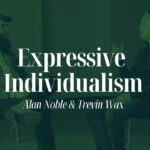For most of us, Charles Taylor’s story of secularism, cross-pressures, and the immanent frame will be most helpful in interpreting cultural works. But for a few, there is a more pressing and, I think, exciting application of Taylor’s ideas. Near the end of A Secular Age, he suggests that literature (and I would argue the other arts as well) may offer one of the most poignant, disruptive voices for our times (732).
Taylor’s account of unbelief in the 21st century suggests that it is not typically intellectual objections that keep people from faith, but the visceral pull of the immanent frame in the background. So we need to offer an alternative “social imaginary,” one that conceives of human fullness in Christ. It may require the creation of a “new language or literary style,” but the Christian artist may depict transcendence from within immanence in a way that speaks to the lived experience of modern people (A Secular Age, 732).
For his model, Taylor cites Flannery O’Connor. Evangelicals’ general admiration for O’Connor may blind us to Taylor’s point here, so I think it’s instructive to look at the particular ways O’Connor works from within the immanent frame to push against closed immanence. Taylor notes how she told stories grounded in the everyday, worldly experience of the immanent frame while providing “a point not visible to the naked eye,” a point that forces a paradigm shift (O’Connor quoted in Taylor, A Secular Age, 732).
One thinks of the grandmother’s epiphany at the end of “A Good Man Is Hard to Find” as an example. She embodies the petty evil of selfishness, perfectly absorbed in her own world and desires. Yet her epiphany at the end of the Misfit’s gun points to a force of transformation from outside herself, a force of grace.
Taylor doesn’t want us to see O’Connor’s use of violence and the grotesque as the only or primary way writers can offer signs of transcendence in an immanently framed world, but she does offer a model. Good contemporary art and literature will convey these cross-pressures. But the Christian artist may tilt toward the plausibility of true transcendence, demonstrating how this “take” on existence deeply satisfies since it doesn’t result in an impoverished vision.
Hard Balance
The opportunity for the Christian artist to point a way out of a closed immanent frame ought to be a source of both inspiration for artists and support from their communities. But it is hard to strike the balance Taylor is calling for, especially in a manner that can be effectively received.
Art that unironically depicts the transcendent, as opposed to an allegory of transcendence, will tend to upset audiences. The ending of Graham Greene’s The End of the Affair is a good example. Greene’s novel recounts a love affair and a conversion to Catholicism during the Battle of Britain. Although God and Catholicism are themes within the text, the world of the novel—the characters, the events, the drama—takes place comfortably within an immanent frame, until the conclusion.
The novel’s final sections introduce a series of miracles. Though most have a plausibly natural explanation, it requires the reader to accept a high degree of coincidence. But the last miracle—the clearing of one character’s birthmark—has no other explanation. Critics and readers have been troubled by this miracle in an otherwise sensible novel. It strains credulity. It forces the reader to accept a particular account of the transcendent, rather than leaving it open.
Interestingly, the protagonist rejects the miracle as evidence of God, demonstrating that Greene is sensitive to the difficulty of imagining something beyond the immanent. Yet despite acknowledging how hard it would be to accept a miracle while living within an immanent frame, and despite Greene’s beautiful prose and storytelling, for some the novel’s conclusion remains an aesthetic failure.
I don’t tell this story to discourage artists from following Taylor’s advice, but simply to show that it’s no easy task. The temptation on one side will be to misrepresent the immanent frame—to cast it as wholly unsatisfying or joyless, when the truth is many live relatively pleasant lives without recourse to faith or any form of transcendence. If anything, technology and consumerism have made it easier than ever to live a fairly pleasant, distracted life within the immanent frame.
Likewise, we may try to exasperate the experience of an encounter with transcendence such that the audience feels unable to empathize. The key, I suspect, is the reality that we’ve almost all experienced the force of the immanent frame and a longing for something beyond it—and so the audience can empathize with both pulls. Artists can work with these foundational experiences, so long as they don’t abuse them through contrivance or unearned emotions.
Significant Investment
Bearing witness to the Christian faith in the 21st century requires a disruptive witness, one that unsettles our neighbor’s assumptions about life within the immanent frame. One powerful way to accomplish this is through interpreting and creating cultural works that speak not only to our minds but also our bodies, emotions, and memories. Taylor has given us valuable tools to better understand our neighbors and the kinds of anxieties that haunt both them and ourselves. To cultivate the deep knowledge to apply Taylor’s ideas, we will need significant investment in the Christian liberal and creative arts.
When evangelicals think about their relationship to the broader culture, I see two prominent approaches.
The first is to treat their faith as just another aspect of their identity. In this trend, Christians conceive of themselves first as modern American individuals. The kinds of movies, films, songs, books, and video games they consume—and the way they interpret those works—is largely indistinct from their nonbelieving neighbors, except that they may have less tolerance for sex scenes, blasphemy, and excessive violence.
The second approach sees the culture as divided into worldview categories, with each worldview vying for power and insidiously persuading us through the media. In this trend, the kinds of cultural works Christians consume and the way they interpret them tend to be distinct from their nonbelieving neighbors—so distinct that they may find it difficult to converse about the same lm in any meaningful way. In light of A Secular Age, it seems both of these popular approaches are misguided, since they fail to account for the force of the immanent frame and the cross-pressures we experience within it.
Charles Taylor’s work invites us to a much more complex—but much more insightful—conception of culture and our relationship to it. He emphasizes the way a basic human desire for fullness, which tends to be oriented toward some kind of transcendent end, motivates cultural works. To pursue this approach, we need foundational investment in Christian liberal arts universities, creative writing and film programs, literary publications, and more. Taylor has done the great service of making us aware of the power of aesthetic witnesses to God’s existence and goodness in a society largely held captive by the immanent frame. We are capable of casting an alternative social imaginary, one that disrupts our neighbors’ conception of the world by revealing and validating eternity hidden in their hearts (Eccl. 3:11). But to learn to interpret and create cultural works in this way will require time, investment, and mentorship.
Editors’ note: This is an excerpt from TGC’s newly released book, Our Secular Age: Ten Years of Reading and Applying Charles Taylor, now available at Amazon (Kindle | Paperback) and WTS Books. Other excerpts:
- The Cross-Pressured Life of Kanye West (Mike Cosper)
- Lose Yourself in a ‘Find Yourself’ World (Jen Pollock Michel)
- Discipleship is Not Consumer-Friendly (Brett McCracken)
- Hope in Our Secular Age (Collin Hansen)
Is there enough evidence for us to believe the Gospels?
 In an age of faith deconstruction and skepticism about the Bible’s authority, it’s common to hear claims that the Gospels are unreliable propaganda. And if the Gospels are shown to be historically unreliable, the whole foundation of Christianity begins to crumble.
In an age of faith deconstruction and skepticism about the Bible’s authority, it’s common to hear claims that the Gospels are unreliable propaganda. And if the Gospels are shown to be historically unreliable, the whole foundation of Christianity begins to crumble.



































